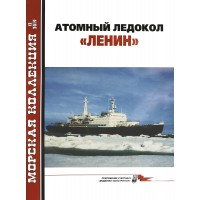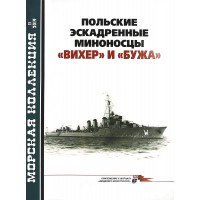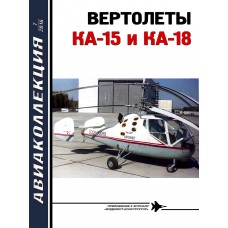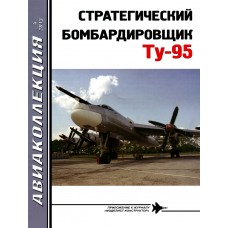AKL-201803 AviaCollection / AviaKollektsia series 03/2018: SIAI S.55 Italian Flying Boat of 1920s Story. Photos, schemes, colour pictures. 32 pages, soft cover, text in Russian.
THE CREATING OF THE AIRCRAFT
In 1922, Alessandro Marchetti was appointed technical director and chief designer of the company "Soccieta Idrovolanti Alta Italia" - "Society of Seaplanes of Upper (that is, Northern) Italy"; in the Italian abbreviation it became SIAL. However, the company gained great popularity under the Savoy trademark.
In early 1923, the Aeronautics Commissariat announced a competition for the creation of a "high seas torpedo bomber." The combat load of the aircraft was determined at one ton. Several firms presented their projects. All machines were biplane flying boats of the traditional layout - a boat-fuselage and two supporting floats under the wing. An exception was the S.55 project sent by SIAL
Most of Marchetti's designs are as extraordinary as their creator. The S.55 seaplane is one of the most famous Italian aircraft and, perhaps, one of the most unusual in its appearance. Imagine two boats covered with a large wing, fishnet trusses carrying a tail unit, two keels and three rudders, a motor-unit on a pylon high above the center section. Could you imagine? This is S.55.
In fact, the designer perfectly thought out all this exotic in accordance with the tasks set. Almost immediately after the appearance of Marchetti in SIAI, the company received a task to design a "high seas torpedo-bomber seaplane". Good seaworthiness was required from such a machine, for this they adopted a catamaran scheme, which gave a high degree of stability. Two boats were made tall and rather wide, capable of breaking the wave. Marchetti himself called his project "oceanic". In addition, the adopted layout provided the convenience of suspension of the combat load - torpedoes or bombs - from the pier to which the aircraft was taxiing.
In the age of biplanes, Marchetti was not afraid to make the S.55 a cantilever monoplane.
The thick profile created a lot of lifting force, which made it possible to carry a significant payload.
The two boats were connected by a center section, to which consoles raised up were docked on the sides. This increased the stability of the aircraft in flight and protected the wing from touching the water during takeoff and landing. The wing was split into watertight compartments, which ensured buoyancy even if the fuselages were damaged. The pilot's cockpit, open from above, was located on the center section at the leading edge. From each boat, a flat truss went back, closed at the end by a wide horizontal tail. It had two keels and three rudders (the third along the axis of the aircraft). A brace system connected the tail with the wing and boats, increasing the rigidity of the structure. As a result, Marchetti has a "frame" - a solid and reliable two-fuselage layout.
Bombs or a torpedo were suspended from the outside under the center section. This saved from a sharp change in the alignment of the aircraft when dropping cargo.
The engines were raised high enough to keep them from splashing. They stood in tandem - one with a pulling screw, the other with a pushing propeller.
Provided for the placement of firing points in the front and rear of each boat. They had wide sectors of fire, providing almost all-round protection. Only the space under the aircraft was not shot through, but the seaplane could descend to the surface of the sea, making an attack from this direction impossible.
Almost the entire structure of the seaplane was made of wood, which promised simplicity and low cost of production. The aircraft was easily and quickly disassembled into large units: this facilitated transportation and repairs.
In July 1923, SIAI received an order for two copies of a new flying boat. The first prototype S.55 (which later received the military number MM 18) began to be built at the plant in Sesto Calende with 300 hp FIAT A. 12bis water-cooled engines. everyone. The engines stood at the top of the truss pylon and were covered with hoods. Both water radiators were mounted in the front, just behind the pulling screw above and below its axis. Armament was envisaged from two 7.69-mm machine guns - on the turrets in the stern of the boats. Holders for bombs or torpedoes were located under the center section.
Factory tests of the S.55 were carried out in September-October 1924. The aircraft showed a maximum speed of 160 km / h there. This is certainly not impressive at the present time, but then it looked good for a large seaplane. It should also be borne in mind that it was not possible to drop the old torpedoes at high speeds; their mechanisms were out of order from hitting the water.
AKL-201803 AviaCollection 2018/3 SIAI S.55 Italian Flying Boat of 1920s Story
- Brand: AviaCollection / AviaKollektsia
- Product Code: AKL-201803 In Stock
-
$3.90
Available Options
Look at these products too:
AKL-200911 AviaKollektsia N11 2009: Lavochkin La-7 Soviet WW2 Fighter magazine
AKL-200911 AviaKollektsia N11 2009: Lavochkin La-7 Soviet WW2 Fighter magazine. Photos, schemes, col..
$3.90
AKL-201607 AviaKollektsia 7 2016: Kamov Ka-15 and Ka-18 Helicopters Story
AKL-201607 AviaCollection / AviaKollektsia series 07/2016: Kamov Ka-15 and Ka-18 Helicopters Story. ..
$3.90
AKL-201304 AviaKollektsia N4 2013: Tupolev Tu-95 Bear Soviet / Russian Strategic Bomber, Missile Carrier, Airborne Surveillance Aircraft magazine
AKL-201304 AviaCollection N4 2013: Tupolev Tu-95 Bear Soviet / Russian Strategic Bomber, Missile Car..
$3.90
Tags: aviation








